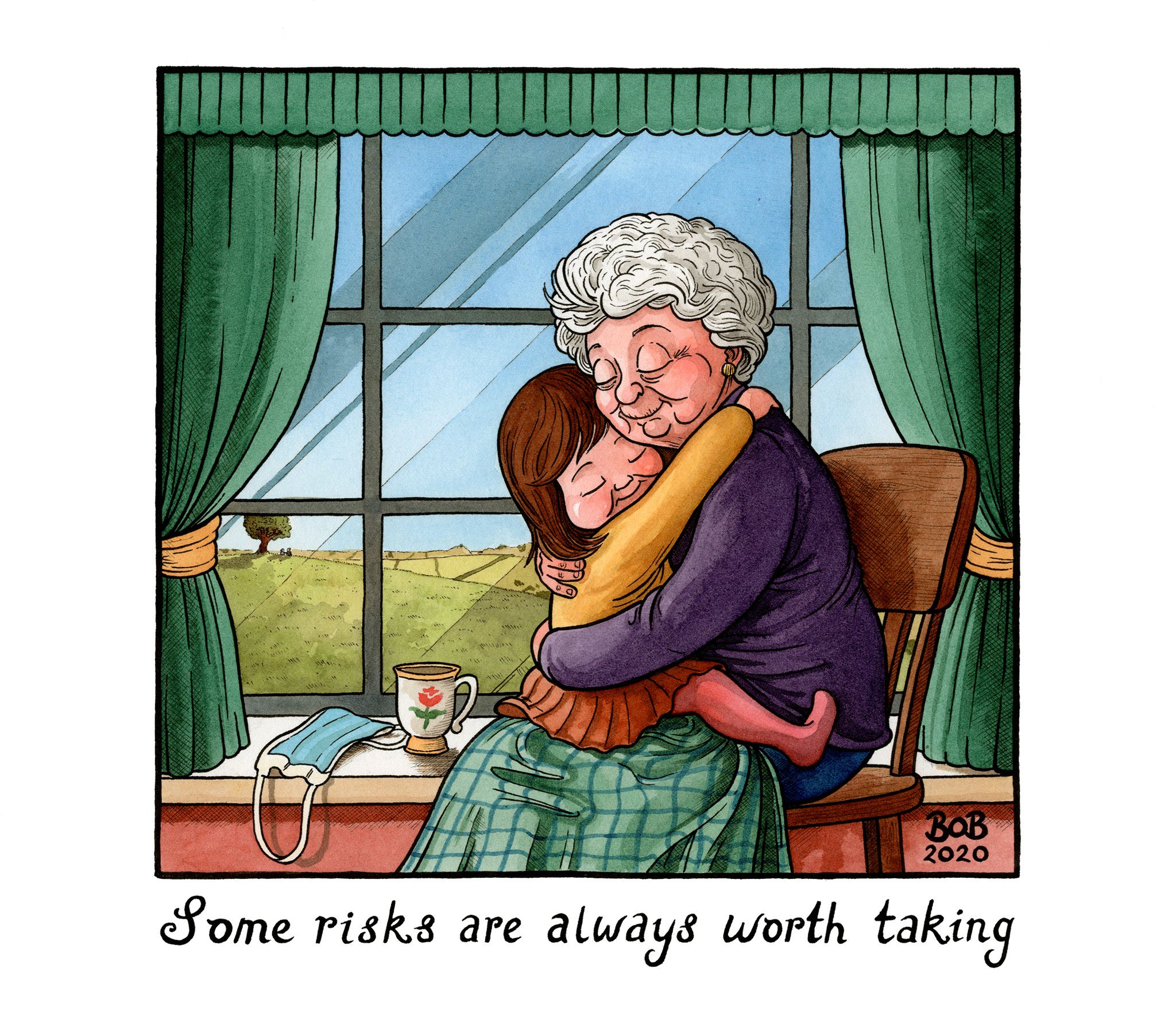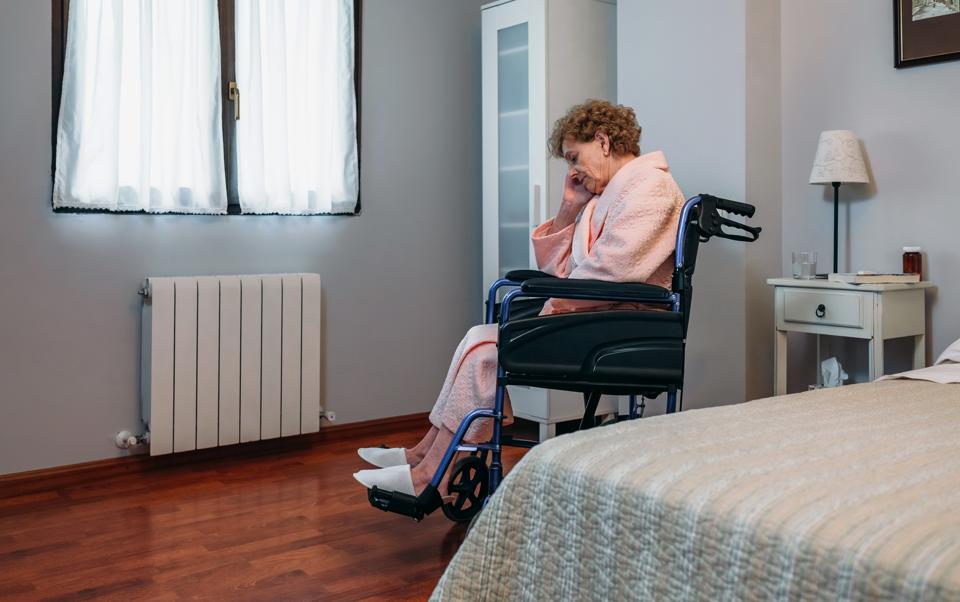Intimate Partner Abuse
There are many reasons to believe that abusive behavior between romantic partners is considerably greater during a lockdown. Nearly every factor of domestic abuse is exacerbated under lockdowns, including:
- Stress. Lockdowns are a source of multiple strong stressors. Paramount among them are lack of employment, cabin fever, and fear of infection. Abusive partners often don’t manage stress well and direct it towards their partner.
- Social support disintegration. Victims of domestic abuse are often unable to discuss their problems with their friends. They may not be able to seek support over the phone for their relationship problems because their partner may overhear them and react aggressively. Abusers also lack social interaction and social support from their family and friends, leaving them to take out their unresolved issues on their partner.
- Inordinate time together. Being stuck at home together obviously means more opportunity for conflict. It can also be a source of conflict. Couples that get along dandily in normal times may find that they are seeing more of one another than they care for… and letting their partner know as much.
- Reduced access to supportive services. Lockdowns have affected all social services, including women’s shelters, counselling offices, and other social services that could benefit couples with abuse issues.
- Inability to leave. Many victims want to leave their abusive partner but can’t due to the lockdown. They may have had their means of income destroyed and now are financially dependent on their abuser. The lockdown may also make it impossible to relocate, such as through the closure of moving companies or the inability to view other homes.
- Inability to date. Bars are closed. Schools are closed. Workplaces are closed. People avoid strangers like the plague when they are out in public. It is nearly impossible to meet others to date with social distancing, so people with mean partners elect to stay rather than be alone.
A number of men reported becoming homeless or sleeping in their cars or in tents to escape the abuse during lockdown.
There is much data to indicate that abuse has increased significantly during lockdowns. As with child abuse data, there is a huge variation between locations. Data signifying prevalence of domestic abuse includes the number of contacts to victim support services, the number of hospital admissions for assault-related injuries, and the number of police reports of domestic violence. In some areas, these measurements are up considerably, and in others they are down considerably. However, experts appear unanimous in estimating that domestic abuse is up everywhere, citing fear or lack of opportunity as the reason why abuse is lower according to some measures.
Domestic abuse encompasses physical as well as verbal and emotional mistreatment. In developed countries, both forms are higher among same-sex couples, and committed at roughly the same rate by both genders in heterosexual couples.
Women’s Aid in Ireland had a 43% increase in calls in the first few months of lockdown, compared to the same period in 2019. In April 2020, the first month of lockdown in Spain, there was a six-fold increase in emails to Spanish abuse helplines. The WHO has reported that calls to European helplines increased by 60% during lockdowns.
The government of Australia reported that Google searches for domestic abuse increased by 75% since their lockdown began. Refuge, a charity in the domestic abuse space in the UK, has reported 1.5 times more people visiting its website and a 25% increase in call volume during the lockdown.
Many nursing homes now actually prevent mentally sound residents from leaving the facility. That is imprisonment — an unconstitutional and criminal practice.
Men have also experienced an increase in domestic abuse during lockdowns. Britain’s Respect Men Advice Line has seen a 96% increase in email volume compared to the same period in 2019. According to the service, men were reporting an increase in both physical abuse and verbal abuse from their partners. A number of men reported becoming homeless or sleeping in their cars or in tents to escape the abuse during lockdown.
By some measurements, domestic violence has decreased. However, experts take this to mean that it is harder for people to seek help, rather than a true decline in the incidence of abuse. Some regions in the U.S. have seen a drop of over 50% in reports of domestic violence. Telefona Rosa, a domestic abuse helpline in Italy, reported a 55% decrease in calls for the first two weeks of March 2020. The NGO believes that the decline was due to the difficulty women had in seeking help at the time.
In the first two months of lockdown, The Ottawa Hospital in Canada witnessed a 50% decline in admissions for sexual assault and domestic violence. Representatives of the hospital attribute this decline to a decreased ability or willingness of women to seek medical help, for instance, due to coronavirus contagion fears.
Since the outbreak of COVID-19, emerging data and reports from those on the front lines, have shown that all types of violence against women and girls, particularly domestic violence, has intensified. This is the Shadow Pandemic growing amidst the COVID-19 crisis and we need a global collective effort to stop it.
The Shadow Pandemic: Violence against women during COVID-19
UN Women
Elder Abuse
The aforementioned stressors and risk factors have incited abuse of all kinds within families and relationships. As with child and intimate partner abuse, data on elder abuse under lockdown is sketchy. However, many seniors advocates have theorized that it must have increased because of the increase in risk factors.
The most common forms of elder abuse are neglect, emotional abuse, and financial exploitation. Financial abuse often takes the form of a family member coercing an elderly relative to hand over their income support, sometimes threatening to put them in a nursing home if they fail to comply. Seniors with dementia have the highest risk for financial abuse.
Needless to say, there has never been a worse time to live in a nursing home than in the social distancing era. Nursing home residents are forced to endure near total social deprivation. They are often not even allowed to have a family member visit. The social distancing treatment given to nursing homes residents is itself a serious form of elder abuse, inciting depression, physical deterioration, and cognitive decline. Many nursing homes now actually prevent mentally sound residents from leaving the facility. That is imprisonment — an unconstitutional and criminal practice.
CanAge, a Canadian seniors advocacy group, has reported a major increase in calls about abused seniors. The group states that it has had a ten-fold increase in these reports from Victoria, BC, a city with a large senior population. In New South Wales, Australia, there has been a 25% increase in calls to the aging and disability commission’s helpline in 2020 and a 75% increase in calls to the seniors rights service.
By all accounts, social distancing laws have caused a tremendous amount of domestic conflict and abuse. Physical assaults, financial exploitation, and verbal abuse in the home have reached a much higher level than existed before social distancing. Seniors living in long-term care facilities are treated like maximum-security prisoners on solitary confinement, with disastrous results for their wellbeing. All these sordid developments must be considered as part of the lockdown crime against humanity.





